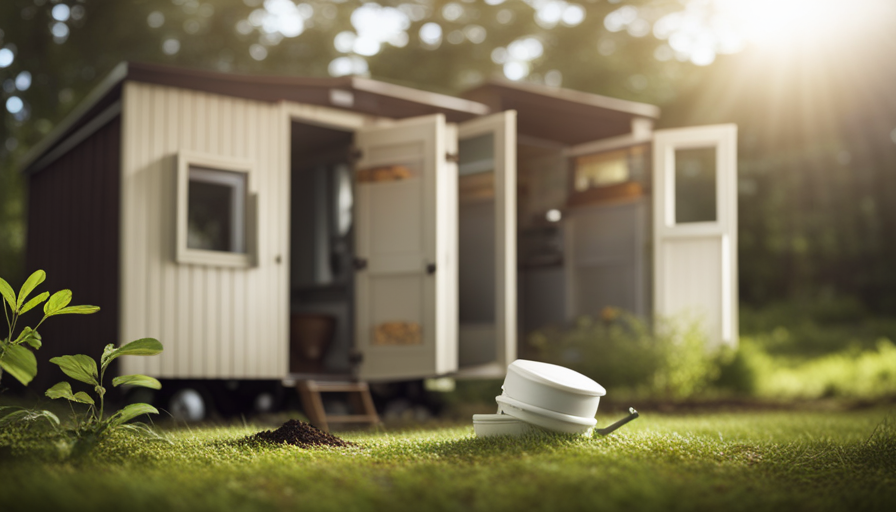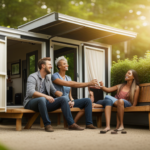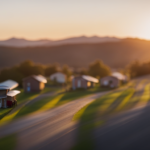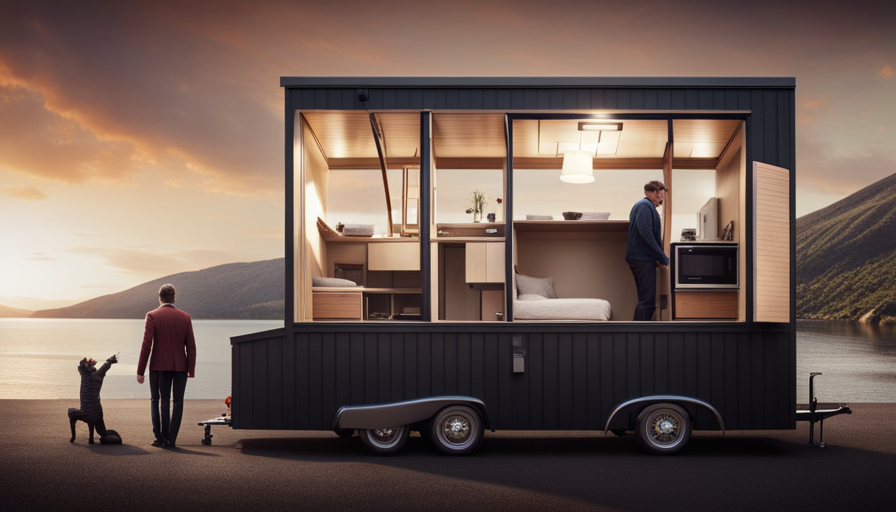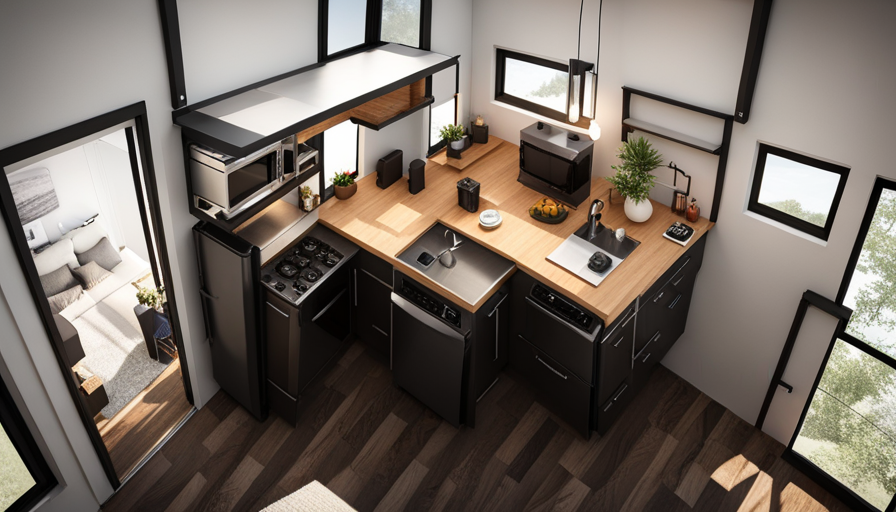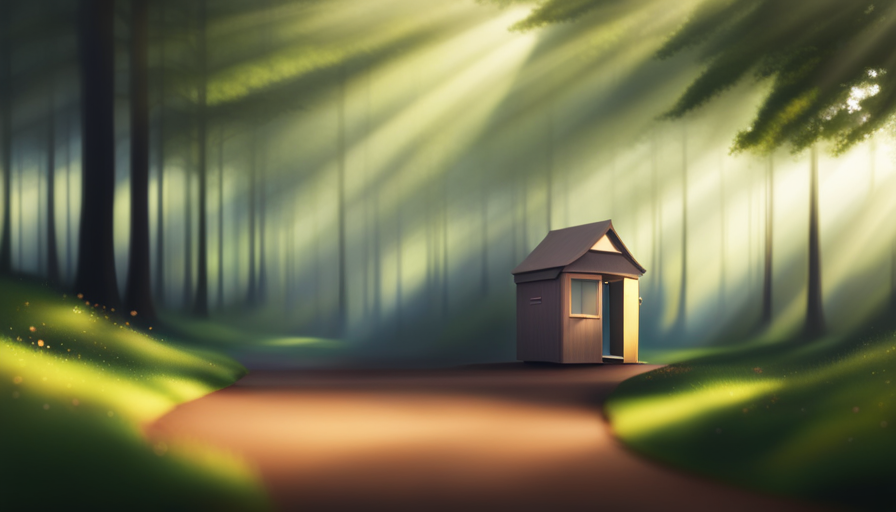Welcome to the fascinating realm of ‘Tiny House Nation,’ where aspirations of downsizing and simplifying are transformed into actuality. This piece delves into the story of Stephanie, an extraordinary individual whose experience with tiny house living has profoundly impacted her life.
Join me as we explore Stephanie’s reflections on the challenges and rewards of living in a tiny home, as well as her new adventures and achievements since appearing on the show. With Stephanie’s invaluable tips and advice, we gain insight into the importance of community and support in the tiny house movement.
Furthermore, we delve into Stephanie’s thoughts on sustainable living and the environmental impact of tiny homes. Finally, we uncover Stephanie’s future plans and goals within the tiny house movement.
Get ready to be inspired as we discover where Stephanie is now in her extraordinary tiny house journey.
Key Takeaways
- Stephanie’s journey through tiny house living has been filled with challenges and rewards, showcasing the transformative power of downsizing and simplifying.
- She emphasizes the importance of community and support in the tiny house movement, finding shared experiences and a sense of belonging among enthusiasts.
- Stephanie is passionate about sustainable living and making conscious choices to minimize her ecological footprint, advocating for renewable energy, water conservation, and a minimalist lifestyle.
- Since appearing on the show, Stephanie has achieved significant milestones, including starting a minimalist lifestyle blog, speaking at conferences, and writing a book, inspiring others to embrace simplicity and sustainability.
Stephanie’s Tiny House Journey on ‘Tiny House Nation’
You’ll be amazed at Stephanie’s incredible journey as she takes you inside her charming tiny house on ‘Tiny House Nation’.
Stephanie’s decision to downsize and simplify her life had a profound impact on her overall well-being. By embracing the tiny house movement, Stephanie was able to declutter her life and focus on what truly mattered. The benefits of simplifying were evident as she experienced a newfound sense of freedom and contentment.
Living in a tiny home allowed Stephanie to prioritize experiences over material possessions, leading to a more fulfilled and meaningful life. The impact of downsizing was not only evident in Stephanie’s physical space but also in her mental and emotional state. She discovered that less truly is more and found joy in the simple pleasures of life.
Now, let’s delve into the impact of living in a tiny home on Stephanie’s life, and how it has transformed her in ways she never imagined.
The Impact of Living in a Tiny Home on Stephanie’s Life
Once immersed in the coziness of my new abode, life took on a kaleidoscope of possibilities, transforming my perspective and inviting me to embrace a world of simplicity and contentment.
Living in a tiny home has profoundly impacted my relationships and financial freedom. There is no room for unnecessary clutter or distractions in a small space, allowing me to focus on what truly matters – the people I love and the experiences we share.
The close quarters have brought my loved ones and me closer together, fostering a deeper connection and enhancing our bond. Additionally, the financial freedom that comes with tiny living has been liberating.
With reduced expenses and fewer bills to worry about, I have saved money, pursued my passions, and lived a more fulfilling life.
Reflecting on my journey of downsizing and simplifying, I realize it has been a transformative and empowering experience, enabling me to prioritize what truly matters.
Stephanie’s Reflections on Downsizing and Simplifying
As I reflect on my journey of downsizing and simplifying, I can’t help but feel a sense of empowerment and liberation. Living in a tiny home has had a profound impact on my mental health. The simplicity and minimalism of my space have allowed me to declutter my mind and find peace.
Without the constant distractions of excess belongings, I’ve been able to focus on what truly matters to me. Additionally, the financial benefits of tiny house living have been tremendous. With a significantly reduced mortgage and lower utility bills, I’ve been able to save money and live a more financially stable life.
Transitioning into the challenges and rewards of tiny house living, I’ve encountered obstacles, but the rewards have far outweighed them.
The Challenges and Rewards of Tiny House Living
Navigating the path of downsizing and simplifying comes with its fair share of obstacles and rewards. Living in a tiny house has its challenges, but the rewards far outweigh them.
One of the biggest challenges is adapting to limited space. It requires creativity and clever storage solutions to make the most of every inch. Financial considerations also play a role, as tiny house living can significantly reduce expenses. The building and design process can be daunting, but the end result is a beautiful, personalized space.
Embracing a minimalist lifestyle has had a profound impact on my well-being. I feel lighter and more connected to nature. Living in a tiny house has taught me to appreciate the simpler things in life.
Transitioning to the next section, my new adventures and achievements since the show have been life-changing.
Stephanie’s New Adventures and Achievements Since the Show
Embarking on new adventures and achieving remarkable milestones, my life has been transformed since my appearance on the show.
In terms of career advancements, I’ve taken the lessons I learned from living in a tiny house and applied them to my professional life. I’ve started my own minimalist lifestyle blog, sharing my experiences and tips with others who’re interested in simplifying their lives.
This has opened up opportunities for me to speak at conferences and even write a book about my journey.
On a personal level, I’ve experienced tremendous growth. Living in a tiny house taught me to prioritize experiences over material possessions, and I’ve embraced this philosophy wholeheartedly. I now focus on creating memories and building relationships rather than accumulating stuff.
Transitioning into the next section, my perspective on material possessions has completely shifted.
How Stephanie’s Perspective on Material Possessions Has Changed
Imagine how your life could change if you shifted your perspective on material possessions and focused on what truly matters. That’s exactly what happened to me after appearing on ‘Tiny House Nation.’ My time on the show made me realize that changing priorities and embracing a minimalist lifestyle can bring immense joy and freedom. Here are five ways my perspective on material possessions has transformed:
-
I prioritize experiences over things: Instead of buying more stuff, I now invest in creating memories through travel and adventures.
-
I appreciate the beauty of simplicity: Living in a tiny house taught me to find joy in the small things and appreciate the simplicity of life.
-
I value relationships over material wealth: Building strong connections with loved ones has become my top priority, rather than accumulating material wealth.
-
I focus on sustainability: I’ve become passionate about reducing my environmental footprint and living a more sustainable lifestyle.
-
I feel lighter and happier: Letting go of unnecessary possessions has brought a sense of freedom and happiness that I never thought possible.
Transitioning into the next section, I want to share my tips and advice for those considering tiny house living.
Stephanie’s Tips and Advice for Those Considering Tiny House Living
Transitioning into the next section, you may find it valuable to consider Stephanie’s insightful tips and advice for those contemplating the prospect of embracing a minimalist lifestyle in a compact dwelling.
One of Stephanie’s key tips for tiny house living is to prioritize organization. With limited space, it’s essential to find creative ways to store your belongings and keep things tidy. Utilizing vertical storage, investing in space-saving furniture, and implementing clever storage solutions can help maximize the limited square footage.
Stephanie also emphasizes the importance of decluttering regularly to prevent the accumulation of unnecessary items. Additionally, she suggests embracing a minimalist mindset and being intentional about what you bring into your tiny house. By focusing on quality over quantity, you can ensure that every item serves a purpose and brings joy.
As we delve into the subsequent section about the importance of community and support in Stephanie’s tiny house journey, we’ll see how these principles have influenced her overall experience.
The Importance of Community and Support in Stephanie’s Tiny House Journey
Cultivating connections and seeking support from like-minded individuals has been a crucial component of fostering fulfillment and friendship throughout my tiny house journey. The importance of community and support can’t be overstated. Here are some reasons why:
-
Shared experiences: Being part of a community of tiny house enthusiasts allows for the exchange of ideas, tips, and stories. It’s comforting to know that others have faced similar challenges and triumphs.
-
Emotional support: Living in a tiny house can sometimes feel isolating. Having a supportive community provides a sense of belonging and understanding.
-
Resource sharing: From finding the best materials to navigating zoning regulations, a community can offer valuable resources and guidance.
-
Collaboration opportunities: Working together on projects or organizing events fosters a sense of unity and purpose.
Transitioning into the next section, the importance of community and support has also influenced my thoughts on sustainable living and the environmental impact of tiny house living.
Stephanie’s Thoughts on Sustainable Living and Environmental Impact
By embracing sustainable living practices and considering the environmental impact, I believe we can significantly reduce our carbon footprint and promote a greener future.
Throughout my journey on Tiny House Nation, I’ve become increasingly aware of our choices’ impact on the environment.
Living in a tiny house has allowed me to minimize my ecological footprint by utilizing renewable energy sources, implementing water conservation methods, and adopting a minimalist lifestyle. I’ve also been passionate about recycling, composting, and using eco-friendly products.
By making conscious choices, we can all contribute to a more sustainable world. As I continue my involvement in the tiny house movement, I hope to inspire others to embrace sustainable living and work towards a future where our actions positively impact the environment.
My future plans and goals revolve around further advocating for sustainable practices and promoting community engagement in the tiny house movement.
The Future Plans and Goals of Stephanie in the Tiny House Movement
Embracing sustainable practices and promoting community engagement in the tiny house movement is at the forefront of my future plans and goals. Here are three key things I hope to achieve:
-
Expand Sustainability: I’m dedicated to finding innovative ways to make tiny houses even more environmentally friendly. I’m implementing solar power systems and incorporating rainwater harvesting techniques to ensure that my tiny house is as sustainable as possible.
-
Educate Others: One of my main goals is to educate others about the benefits of the tiny house movement. I want to inspire people to downsize, live more sustainably, and embrace a simpler way of life. I’m conducting workshops, seminars, and using online platforms to spread awareness and provide resources to support those interested in joining the movement.
-
Foster Community: Building a strong and supportive community is crucial in the tiny house movement. I envision organizing meetups, creating online forums, and hosting events where like-minded individuals can come together, share ideas, and support one another on their tiny house journeys.
By focusing on these future plans and goals, I hope to make a meaningful impact in the tiny house movement and contribute to a more sustainable and connected world.
Frequently Asked Questions
How did Stephanie decide to participate in the show ‘Tiny House Nation’?
Stephanie’s motivation to participate in the show ‘Tiny House Nation’ was fueled by a burning desire for simplicity and freedom. She yearned for a life unburdened by excessive possessions and mortgage payments.
The show presented an opportunity for Stephanie to showcase her creativity and resourcefulness while also sharing her unique experience with the world. It allowed her to inspire others to embrace a minimalist lifestyle and find joy in the little things.
What were some of the unexpected challenges Stephanie faced while living in a tiny home?
Living in a tiny home presented me with some unexpected challenges. The limited space required me to downsize my belongings significantly, which was a difficult adjustment. Simple tasks like cooking and cleaning became more complicated due to the lack of counter space and storage.
I also had to get creative with storage solutions to maximize the available space. Despite these challenges, my experience living in a tiny home taught me valuable lessons about minimalism and the importance of prioritizing what truly matters.
How has Stephanie’s relationship with her possessions changed since downsizing and simplifying?
Embarking on Stephanie’s minimalism journey was like stepping into a new world, full of possibilities and freedom. It was a bittersweet farewell to the cluttered past, but one that brought immense clarity.
Letting go of emotional attachment towards possessions proved to be the most challenging aspect. However, as I downsized and simplified, my relationship with my belongings transformed. Possessions no longer defined me, but rather, I found solace in the simplicity and the memories they held.
What advice does Stephanie have for individuals who are considering transitioning to tiny house living?
If you’re considering transitioning to tiny house living, I have some advice for you.
First, let’s address the benefits of tiny house living. It allows you to simplify your life, reduce your carbon footprint, and save money on utilities and maintenance.
Now, let’s debunk some common misconceptions about tiny house living. Contrary to popular belief, tiny houses can be comfortable and spacious if designed well.
Additionally, it’s important to remember that downsizing means letting go of unnecessary possessions, but the freedom and simplicity it brings is absolutely worth it.
What are Stephanie’s future plans and goals within the tiny house movement?
In the future, my plans and goals within the tiny house movement are focused on making a lasting impact on the community. I want to continue sharing my knowledge and experiences to inspire others to embrace the benefits of tiny house living.
By living in a smaller, more sustainable space, we can reduce our carbon footprint and contribute to a healthier environment. Together, we can create a more sustainable future for generations to come.
Conclusion
Well, who would’ve thought that living in a tiny house could’ve had such a profound impact on my life? It’s funny how downsizing and simplifying can actually lead to a greater sense of freedom and fulfillment.
I never imagined that my tiny house journey would’ve opened up so many new adventures and achievements for me. And let’s not forget the importance of community and support in this journey. It’s truly amazing how sustainable living and environmental impact have become such prominent themes in my life.
As for the future, the possibilities are endless in the tiny house movement. Who knows what incredible goals and plans await me? It’s a small world after all.
Hi, I’m Emma. I’m the Editor in Chief of Tiny House 43, a blog all about tiny houses. While tree houses are often associated with childhood, they can be the perfect adult retreat. They offer a cozy space to relax and unwind, surrounded by nature. And since they’re typically built on stilts or raised platforms, they offer stunning views that traditional homes simply can’t match. If you’re looking for a unique and romantic getaway, a tree house tiny house might just be the perfect option.

